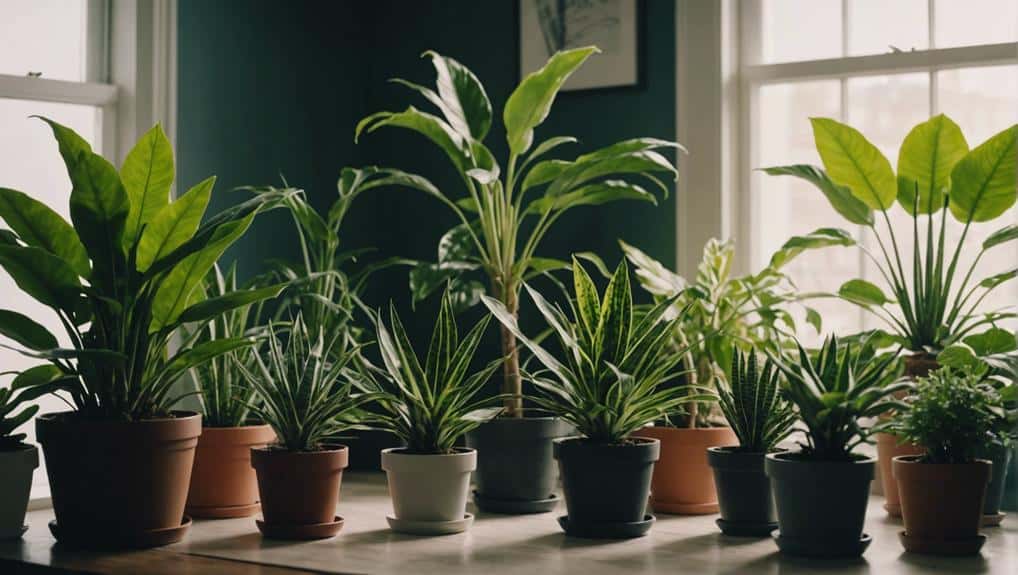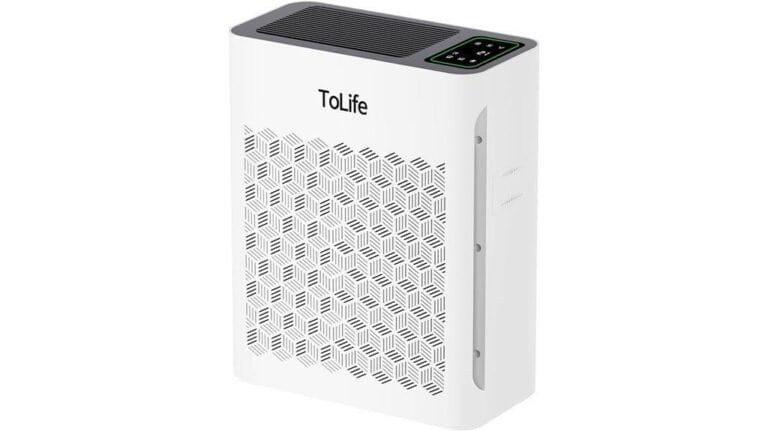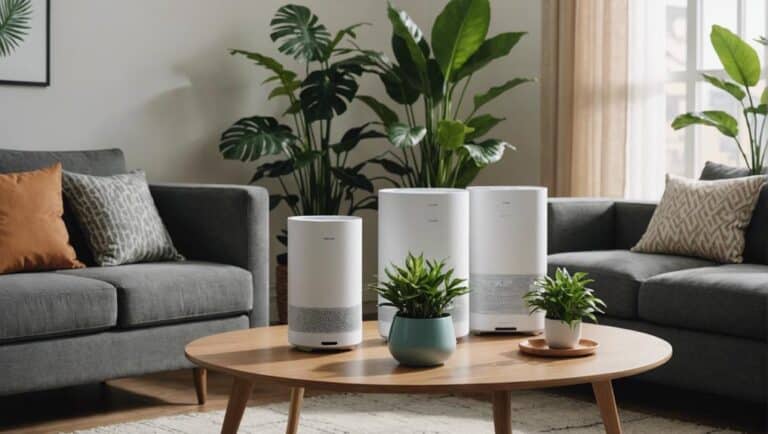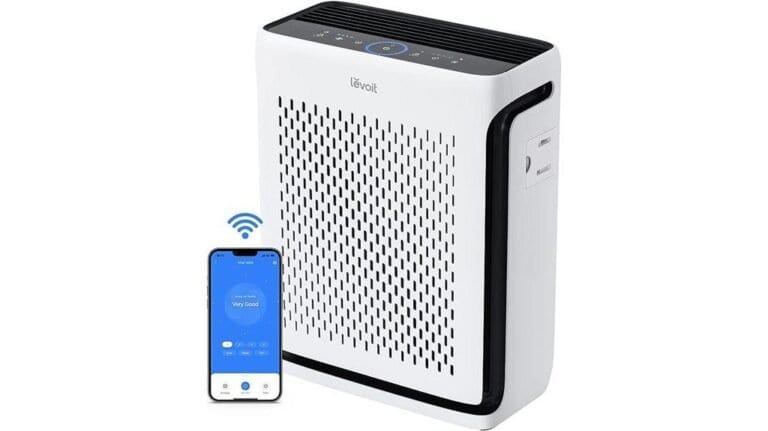Which 7 Natural Air Purifier Plants Clean Indoor Air?
As we explore the domain of natural air purification, a fascinating array of plants emerges, each with its unique ability to cleanse indoor air. Among these botanical wonders are the Boston Fern, Spider Plant, Philodendron, Snake Plant, Peace Lily, Bamboo Palm, and Rubber Tree.
These plants are not just green additions to your décor; they actively work to rid your living spaces of harmful pollutants. Curious to uncover the secrets behind their air-purifying prowess? Keep an eye out for the intriguing details that lie ahead.
Boston Fern
Boston Ferns excel at enhancing indoor air quality by effectively removing low levels of formaldehyde, xylene, and toluene. These air purification champions thrive in moderate, indirect sunlight and require high humidity levels, making them perfect for improving air quality in indoor spaces. Their elegant feathery fronds not only add a touch of greenery but also act as natural air filters, making them a must-have for any room.
To maximize the air purifying benefits of Boston Ferns, consider placing them in hanging baskets or on pedestals and shelves. These strategic placements guarantee that the ferns can efficiently filter the air while enhancing the aesthetic appeal of the space. With their knack for removing harmful toxins from the air, Boston Ferns are ideal for areas with lower air quality. So, take control of your indoor environment by introducing these purifying plants into your living or working spaces.
Spider Plant
Spider plants provide a range of benefits for indoor air quality, such as their ability to remove up to 95% of air chemicals in just one day.
We can also explore essential care tips to guarantee these plants thrive and continue purifying our living spaces effectively.
With their pet-friendly nature and toxin-filtering capabilities, spider plants make a valuable addition to any home seeking cleaner air.
Spider Plant Benefits
With their remarkable ability to eliminate 95% of air chemicals within 24 hours, spider plants emerge as exceptional natural air purifiers known for their effectiveness in enhancing indoor air quality. These air-purifying plants excel at filtering toxins such as carbon monoxide and benzene, ensuring a cleaner and healthier environment.
Spider plants aren’t only beneficial for indoor air quality but are also safe for pets, making them an ideal choice for households with furry companions. Additionally, these resilient plants are low-maintenance, making them perfect for beginners or those new to indoor plants.
Moreover, spider plants aid in increasing humidity levels in rooms, contributing to a more comfortable and healthier indoor atmosphere.
Spider Plant Care
Maintaining ideal conditions for the growth of spider plants is crucial to guarantee their longevity and effectiveness in improving indoor air quality. These versatile indoor plants are low maintenance and thrive in various lighting conditions, making them a perfect choice for those seeking to manage their indoor environment.
Spider plants excel at removing air chemicals, eliminating up to 95% of toxins like carbon monoxide and formaldehyde within 24 hours. Additionally, they’re safe for pets, adding to their appeal for pet owners. Not only do spider plants purify the air, but they also increase room humidity levels, contributing to overall air quality.
Philodendron
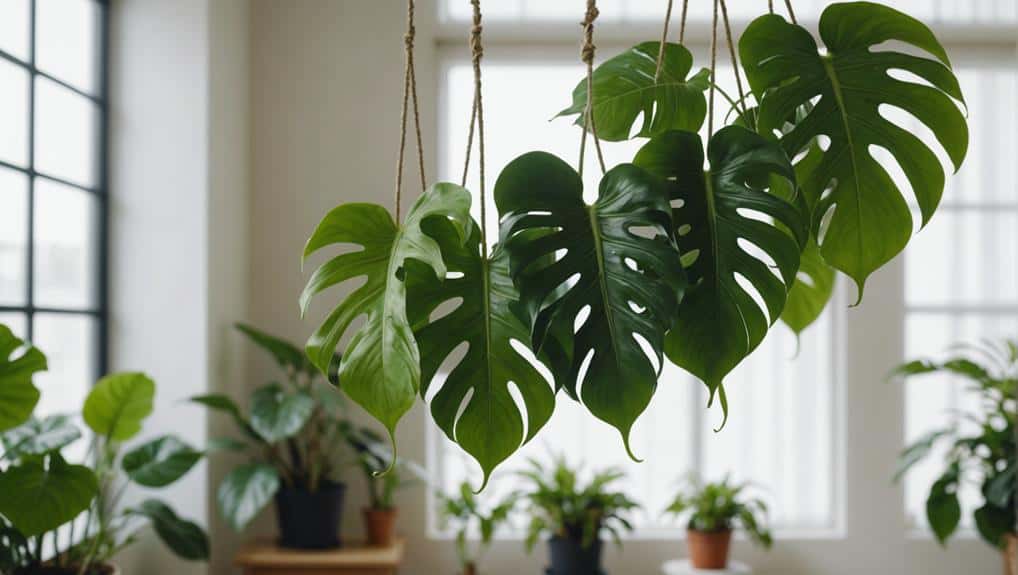
We’re about to touch on the benefits, care tips, and placement suggestions for Philodendron plants.
These heart-shaped leaf beauties are famous for tackling low levels of formaldehyde in the air.
Let’s explore how to make the most of Philodendron as a natural air purifying option.
Philodendron Benefits
Philodendron plants, renowned for their heart-shaped leaves and efficient removal of formaldehyde from indoor air, are a valuable addition to any indoor space. These plants thrive in low light conditions, making them ideal for indoor environments.
By effectively removing formaldehyde, philodendrons contribute to improving indoor air quality, creating a healthier atmosphere in homes or offices. Their rapid growth and easy care requirements make them a popular choice for those seeking to enhance their indoor environment.
With philodendrons, you can enjoy not only the aesthetic appeal of their unique leaves but also the practical benefits they bring in purifying the air we breathe.
Philodendron Care Tips
For prime growth and health, consider these essential care tips for your Philodendron plant. Guarantee your Philodendron thrives by placing it in moderate to low indirect light, as it excels in such conditions.
Regular watering is vital to support its rapid growth and maintain its heart-shaped leaves. This plant not only adds greenery but also purifies indoor spaces by removing low levels of formaldehyde.
Philodendron Placement Suggestions
After ensuring your Philodendron receives the right amount of light and water, the next step is to carefully consider its placement within your indoor space. Philodendrons, with their heart-shaped leaves and ability to thrive in low light, make excellent air purifier plants for indoor spaces.
To maximize their air-purifying benefits, place Philodendrons in areas where they can receive enough indirect light, such as near a window with sheer curtains. Since Philodendrons are effective at removing formaldehyde, consider situating them in rooms where this pollutant may be present, like offices or living rooms.
Their attractive foliage adds a touch of green to any room, enhancing both air quality and aesthetics effortlessly.
Snake Plant
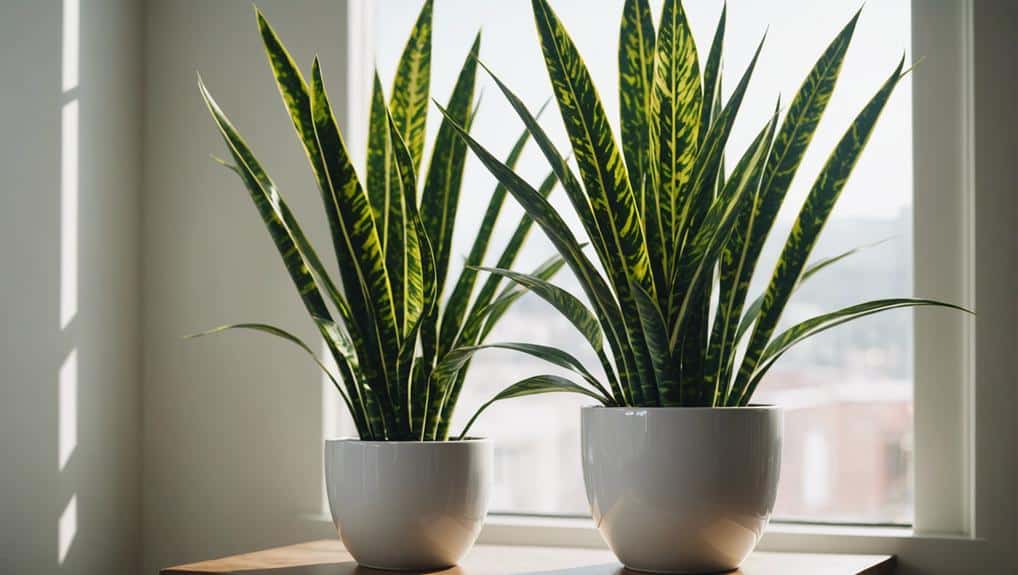
Effective at removing toxins from indoor air, the Snake Plant is a versatile and popular choice for improving indoor air quality. This plant is a top contender for those seeking clean and fresh air in their living spaces.
Here are some key points about the Snake Plant:
- Air-Purifying Properties: Snake plants excel at removing harmful toxins like formaldehyde and benzene, creating a healthier environment indoors.
- Versatile Lighting Conditions: Thriving in various light settings, from bright to low light, the Snake Plant adapts well to different areas within your home.
- Low Maintenance: With minimal care requirements, these plants are perfect for individuals with busy schedules, as they can withstand long periods without watering.
- Toxic if Ingested: While beneficial for air quality, it’s essential to keep Snake Plants away from pets or small children, as they can be harmful if consumed.
- Improving Indoor Air Quality: By incorporating Snake Plants into your indoor space, you proactively work towards cleaner and fresher air for you and your family.
Peace Lily
With its elegant white blooms and air-purifying properties, the Peace Lily offers both aesthetic appeal and improved indoor air quality. This low-maintenance plant is known for its ability to remove toxins like benzene and formaldehyde from the air, making it a valuable addition to any indoor space.
Peace Lily’s white blooms add a touch of sophistication to its surroundings, creating a serene atmosphere that promotes relaxation and well-being.
In terms of care, Peace Lily is relatively easy to maintain, requiring only weekly watering to thrive. Its compact size, reaching up to 16 inches tall, makes it suitable for various spaces, from shelves to desks.
Bamboo Palm
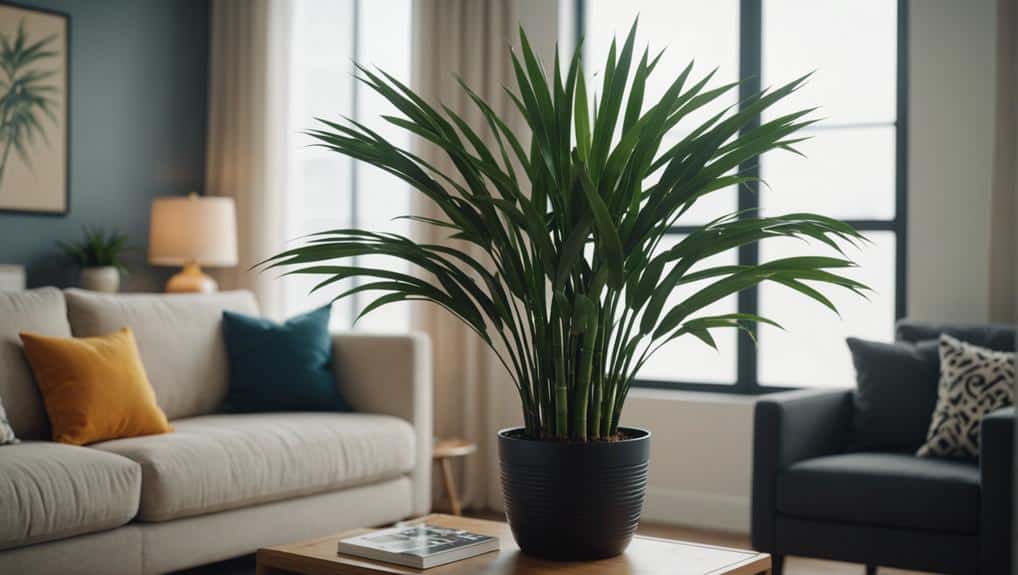
The Peace Lily’s air-purifying benefits are complemented by the Bamboo Palm’s ability to filter a range of toxins from indoor air. This air purifying plant effectively removes formaldehyde, benzene, and chloroform, creating a healthier indoor environment.
Here are some key points about the Bamboo Palm:
- Filters formaldehyde, benzene, and chloroform from indoor air.
- Effective at removing harmful toxins commonly found in indoor environments.
- Versatile in height, adding aesthetic appeal to indoor spaces.
- Thrives in humid conditions, ideal for moisture-rich areas like bathrooms.
- Improves air quality and overall well-being when added to indoor spaces.
Rubber Tree
Rubber Trees, renowned for their exceptional oxygen-producing capacity, greatly contribute to purifying indoor air quality. These plants are effective in removing up to 60% of mold spores and bacteria, making them excellent air purifiers. Additionally, rubber trees have the ability to filter toxins like formaldehyde, promoting a healthier indoor environment. Their large leaves play a significant role in absorbing harmful substances, further enhancing the air quality in indoor spaces.
When it comes to controlling the air quality in our living or working areas, incorporating a Rubber Tree can be a wise choice. Not only do these plants release a substantial amount of oxygen, but they also actively combat mold spores, bacteria, and formaldehyde, creating a cleaner and fresher atmosphere. With their natural air purifying abilities and suitability for indoor spaces, Rubber Trees offer a practical solution for those seeking to improve the air quality within their surroundings.
Conclusion
To sum up, these seven natural air purifier plants aren’t only beautiful additions to indoor spaces but also work hard to clean the air we breathe.
With their ability to filter out toxins and release oxygen, plants like Boston Fern, Spider Plant, Philodendron, Snake Plant, Peace Lily, Bamboo Palm, and Rubber Tree are essential for creating a healthier indoor environment.
Incorporating these plants into your living or work space can greatly improve air quality and promote overall well-being.
